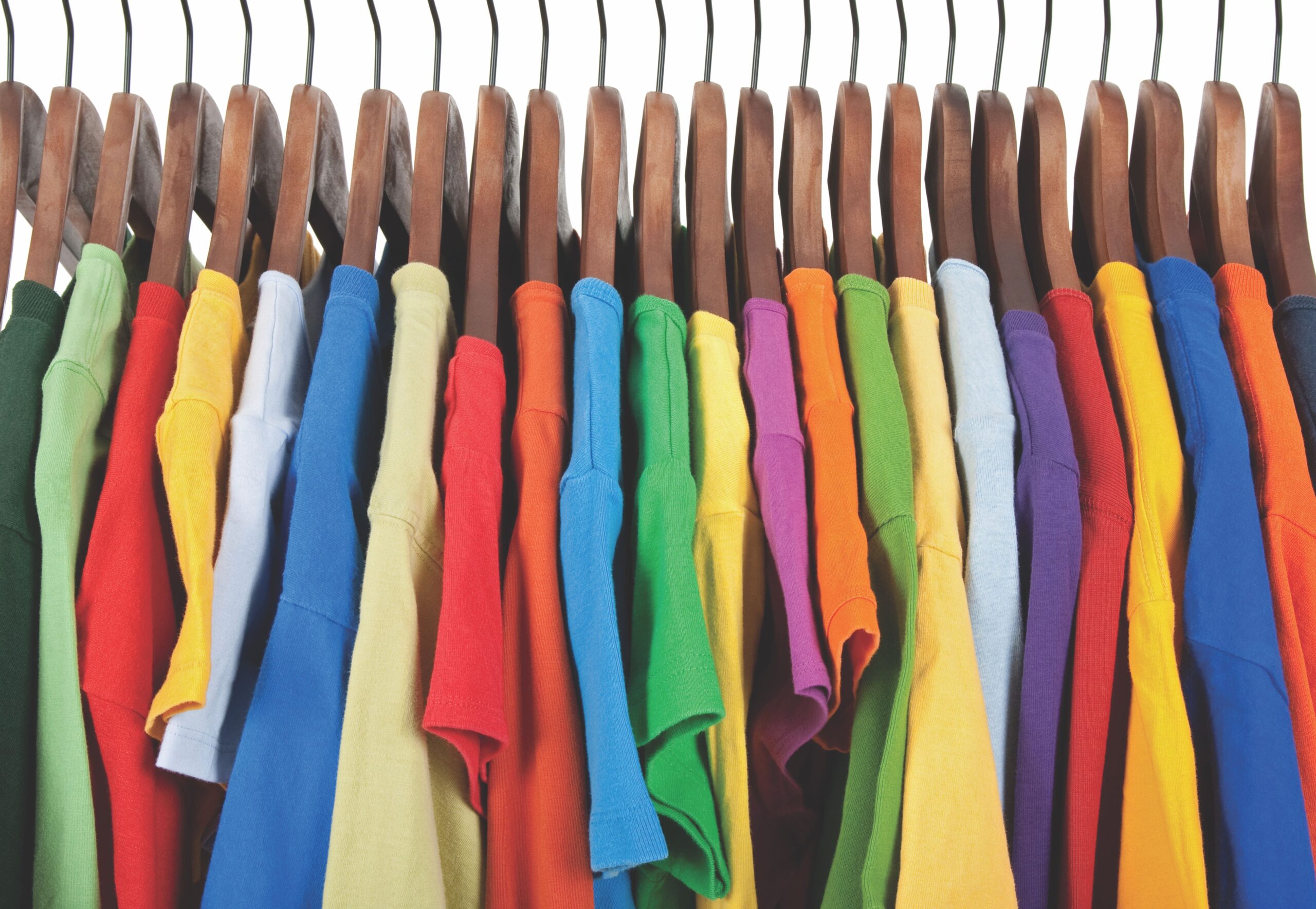We may never know how the fire started. But with no working fire extinguishers and not enough exits, the Tazreen Fashions factory in Dhaka, Bangladesh, was soon engulfed in flames, spreading upwards from the ground floor last November. The fire — and the lack of safety standards at a factory where women sewed clothes for Walmart and other international clients — left at least 112 workers dead.
Ironically, the tragedy happened on the same weekend that Americans (and increasingly, Canadians) celebrated Black Friday, the annual mega-sale that kicks off a season of Christmas shopping. Among the deals snatched up by shoppers at malls across North America: bags and bags of clothes, now cheaper than ever, more clothing than anyone can wear — but still exacting a toll on the human rights of factory workers and the environment.
You may unsubscribe from any of our newsletters at any time.
Proper safety regulations in the Tazreen factory would have added about 10 cents to the cost of each garment sewn there, estimates Kevin Thomas. He’s the director of advocacy for the Maquila Solidarity Network, a labour and women’s rights organization based in Toronto that draws attention to sweatshop conditions in developing countries, including long hours, low pay and a failure to enforce labour and environmental regulations.
Thomas describes a complex relationship between international brands that outsource their manufacturing to contractors, who in turn may subcontract the work to other factories, in some cases without the knowledge of the parent brand. “One of the reasons that brands have outsourced production is to avoid all responsibility for ensuring living wages and safety,” he says. “The brands want to say that safety is up to the factory owners.”
Canadians are now spending less on their wardrobes, relative to their incomes, than in the past. The average household spent only 4.3 percent of its budget on clothing in 1996, compared to 8.8 percent in 1969, according to the most recent study from Statistics Canada. The problem, however, is that an abundance of cheap clothing depresses factory wages, saps resources and ultimately ends up in the trash.
Most of those clothing bargains probably came from an overseas factory. When Canadian consumers expect low prices from large retailers like Walmart, Old Navy, Joe Fresh and now Target, factories must sew clothing at the lowest cost possible, keeping wages low for garment workers (factory workers in Bangladesh are paid less than $50 a month). Manufacturing clothes also depletes environmental resources, such as oil for polyester and water for cotton. For example, Levi’s has calculated that growing the cotton for one pair of jeans uses 1,700 litres of water, according to a 2009 life-cycle assessment. And once worn out, those jeans may simply be tossed. Americans threw out 13 million tons of textiles including clothing in 2010, of which 15 percent ended up being recycled, according to the U.S. Environmental Protection Agency.
“We own more clothing than ever before,” says author Elizabeth Cline in an interview, busy promoting her 2012 book, Overdressed: The Shockingly High Cost of Cheap Fashion. “We’ve really just got sucked into the buy-and-toss cycle of shopping, versus building a wardrobe over time, that long-term strategy of shopping.”
Cline investigated the rise of cheap clothing in the United States, where the average American buys 64 pieces of clothing each year. Her research led her to Shenzhen, China, where she toured huge factories that can complete large clothing orders, such as 22,000 dresses in a month for a chain store or a major brand.
As factory wages rise in China, some retailers are shifting production to countries where costs are lower. But Cline argues the large-scale Chinese factories are difficult to replicate in smaller countries such as Bangladesh. “I think we’re already seeing some shifts. In 2011, the price of clothing went up for the first time in years. This whole system is dependent on cheap labour, and I think we’ve hit bottom,” she says.
Before the Canada-United States Free Trade Agreement in 1989, about 70 percent of textiles sold in Canada were produced in this country. In the early 1990s, large American big-box stores entered Canada, bringing cheaply made clothing: Walmart in 1994 and Old Navy in 2001. Canada’s clothing manufacturers found it hard to compete; factories and textile mills shut down, and workers lost their jobs. Today, much of the clothing bought in Canada is imported from the United States, China, Bangladesh, India and Mexico.
At the same time, many consumers refuse to pay more for clothes than necessary. Nancy Dennis, the trend and brand director for Sears Canada, describes Sears as a middle-price store that tries to balance fair prices with quality. “We’re not interested in disposable clothing for teenagers. Our customer does care about quality,” she says. Dennis adds that although consumers like the idea of made-in-Canada clothing, they also want low prices, which means Sears manufactures a lot in Bangladesh, Vietnam, Cambodia and China.
Before Ragpickers vintage clothing store in Winnipeg was forced to temporarily close its doors in February, the shop was known for its crowded racks of 1960s party dresses and men’s suit jackets, the occasional garment bearing a label that it was made by a union in Canada. Store owner Kristen Andrews blames free trade for the rise of cheap clothes sold in big-box stores. “In the 1950s and ’60s dress shops, seamstresses tailored things for you. It was not disposable clothing. You could buy a suit and have it last your entire life.”
The average Canadian family now spends $3,452 a year on clothing and shoes, according to a 2010 Statistics Canada survey. At the same time, you’re not imagining things if you’ve noticed that garment quality isn’t what it used to be. The struggle to keep prices low in stores means that sweaters, for example, may be made with a higher percentage of nylon and less wool, and the material may be thinner. And the poorer the quality, the more quickly we throw away or donate our clothes.
But even in cases where we give our gently used clothing to a charity, our overabundance will ultimately end up somewhere as waste.
At the Salvation Army’s recycling terminal in Winnipeg, three layers of boxes stretch up to the roof, with only a few people working in the quiet, orderly warehouse. Boxes of out-of-season clothing and Christmas decorations wait to be sent back to the city’s thrift stores in the right season, along with furniture, books and an enormous white bag holding 382 pairs of shoes. “Our goal inside the terminal is to basically recycle as much as possible. Last year, the western Canadian recycling terminals diverted 14 million pounds of stuff from the landfill,” says Scott Gilmore, the terminal’s marketing co-ordinator.
The stained, the ripped — the clothes deemed unsaleable in Winnipeg stores — these are bundled for resale to a recycler. On the side of the warehouse, the baler is temporarily broken, with the door of the orange industrial machine hanging open to reveal a compressed block of fabric. While all these clothes were selected with care when they were new, they’re now squeezed into an 800-pound bale, the edge of a pink shirt peeking out of layers of red, green and blue clothing.
Large bales of clothing are sometimes shipped to sub-Saharan Africa and sold at markets there — in 1995, Americans exported $81.1 million worth of used clothing. Critics have argued that importing used clothing from North America harms the local African textile industry. In North America, old textiles can also be recycled for industrial purposes, like wiping down machinery, for example.
When you consider all the associated costs with a $9 T-shirt, including the waste generated, that cheap shirt can start to look expensive.
More hopefully, some consumers are finding ways to avoid disposable clothing. Denise Wild owns the Sewing Studio, a company that offers sewing lessons in Toronto and New York City, largely to professional women aged 25 to 40. “I think sewing is seeing a resurgence,” says Wild. “Sewing is like learning basic handyman skills. It’s like taking a basic cooking course.”
Other people choose to shop at used clothing stores and rummage sales. At the Nearly New Boutique and flea market held twice yearly at Trinity United in Thunder Bay, Ont., the proceeds benefit the church’s fundraising efforts. Some shoppers even discover a bargain, like the man who bought two suits that he had previously donated out of his own closet. “His wife was chuckling, because he didn’t recognize the suits,” says Paula Leach, the store’s volunteer co-chair. “But he said they fit just perfectly. He decided to wear them again after seeing them in a new light.”
Susan Peters is a writer and editor in Winnipeg.
***
This story first appeared in The United Church Observer’s May 2013 issue with the title “Buy. Wear. Toss.”













